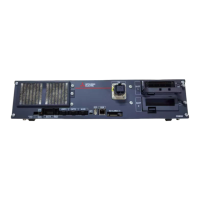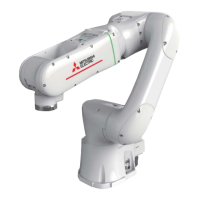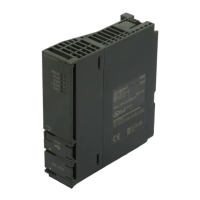3 Description of functions
3-18
Reply data type
designation
RecvType
unsigned short
(2-byte)
1) When transmitting (commanding) from the personal computer to the
controller, designate the type of data replied from the controller.
0 // No data
1 // XYZ data
2 // Joint data
3 // pulse data
4 // XYZ data (Position after filter process)
5 // Joint data (Position after filter process)
6 // Motor pulse data (Position after filter process)
7 // XYZ data (Encoder feedback value)
8 // Joint data (Encoder feedback value)
9 // Motor pulse data (Encoder feedback value)
10 // Current command [%]
11 // Current feedback [%]
2) When receiving (monitoring) from the controller to the personal
computer, indicate the type of position data replied from the controller.
0 // No data
1 // XYZ data
2 // Joint data
3 // Motor pulse data
4 // XYZ data (Position after filter process)
5 // Joint data (Position after filter process)
6 // Motor pulse data (Position after filter process)
7 // XYZ data (Encoder feedback value)
8 // Joint data (Encoder feedback value)
9 // Motor pulse data (Encoder feedback value)
10 // Current command [%]
11 // Current feedback [%]
* It is the same as RecvType. You may use whichever.
Reservation
unsigned short
Position data
Pos / jnt / pls
POSE, JOINT or
PULSE (40-byte)
* Refer to strdef.h
in the sample
program for
details on each
data structure.
1) When transmitting (commanding) from the personal computer to the
controller, designate the command position data transmitted from the
personal computer.
Set this to the same data type as that designated for the transmission data
type designation.
2) When receiving (monitoring) from the controller to the personal
computer, this indicates the position data replied from the controller.
The data type is shown in SendType (= RecvType ) .
The contents of data are common to command/monitor.
POSE // XYZ type [mm/rad]
JOINT // Joint type [rad]
PULSE // Motor pulse type [the pulse] or Current type [%].

